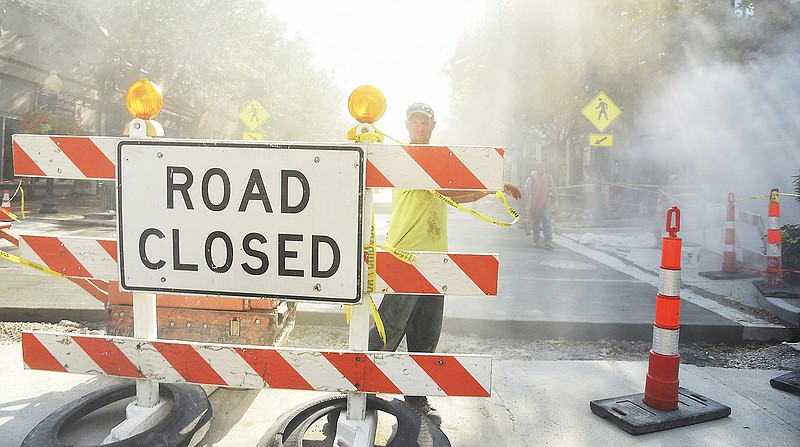Jefferson City staff have identified a cost-effective and more appealing way to repair concrete streets.
Jefferson City Operations Division Director Britt Smith presented the Jefferson City Public Works and Planning Committee on Thursday with photos and updates on the first use of concrete joint restoration.
On concrete streets, the new restoration increases the quality of rides for vehicles and creates a better look, Smith said.
The concrete joint restoration requires city crews to mill down 1.5 inches in the concrete. Then, the area is coated with a binding agent before the mixture of high strength concrete is added.
After the solution sits, crews re-saw the joint and seal the area, which takes about two days.
"It makes it a very strong concrete; it hardens quickly and tends to stay put in the smaller hollow holes," said Matt Morasch, Jefferson City Public Works Director.
With the repairs done by the Jefferson City Streets Division, the cost is estimated at $500 or less in materials than other street repair methods the department currently uses, Morasch said.
But the concrete restoration takes more manpower than the other methods, Smith said.
Concrete joint restoration was recently completed on New Bedford Court with future plans for Scenic Drive, Constitution Court and other subdivisions and streets, Morasch said. City staff is not sure how many miles of streets will be treated by this method.
"This isn't a silver bullet for everything," Morasch said. "Even if it only lasts equal to the overlay, it's much more cost-effective. You can't really compare an overlay to this at all."
Other street repair methods include overlaying the streets, when crews lay a strip of asphalt over the streets, or filling voids by adding asphalt between cracks in the street.
Overlay options improve the ride, but the quality of the ride deteriorates over time. The surface lasts about seven to 10 years, Smith said.
That bumpy ride is caused by the asphalt rising. The filling is inexpensive and quick, but a short-term solution, Smith said.
The city's overlay program will treat 12 lane miles beginning this fall, Morasch said.
Each project is approved by the Jefferson City Council and sent to bid. Work will be done by Capital Quarries Company. Projects could cost an estimated $10,000 per block, he said.
"The asphalt company here in town was affected by the flood," Morasch said. "They actually had to move their asphalt plant over to the Stadium Quarry. It will get done this year; it's just going to take a little extra time."
The city hears complaints about potholes, stormwater, pipes and street repair regularly, Morasch said.
"We are behind on that just because of tornado and flood," he said.
A total of 6,000 regular hours, 1,370 overtime hours and 8,700 equipment hours have been completed by the streets division in tornado and flood response and cleanup, Smith said.
When describing what wears down streets, Smith mentioned the chemicals and salt for ice and snow treatments, chemicals in fertilizers, traffic, water intrusion and aging roads.
Although the best option for street repair would be gutting and repairing entire streets, this isn't possible because of the high price tag and disturbance to residents. Full removal and replacement could cost an estimated $100,000 per street, Morasch said.

